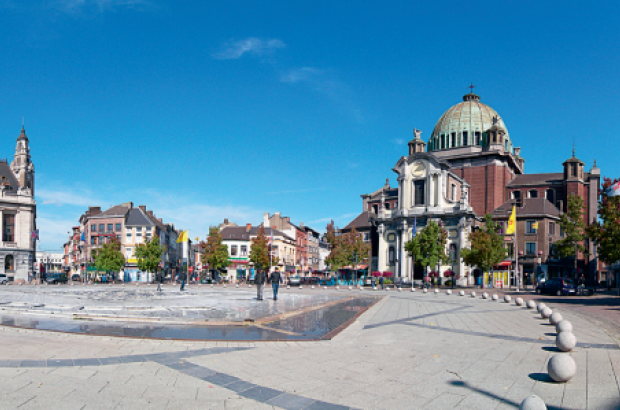- Daily & Weekly newsletters
- Buy & download The Bulletin
- Comment on our articles
Summer trips outside Brussels part 3/4: Charleroi
Charleroi is never going to top any lists of tourism hotspots. The much-maligned city is Belgium’s poster child for postwar urban depression, struggling to reinvent itself after the decline in the coal and steel industries.
Yet there’s optimism in the air around its current city centre regeneration, and, thanks to its airport, most people can pinpoint Charleroi on a map. Plus, the relatively young city – for Belgium – offers plenty of artistic grit and defiant character. A new regeneration project is set to reignite the downtown area with shops, a hotel, apartments, cafes, bars, restaurants and space for artistic activities. Locals, known as Carolos, remain positive and loyally defensive of their city. Welcome to Belgium’s black country.
See
It’s a city of highs and lows in more ways than one, divided as it is into a lower and upper town. The main train station Charleroi south is close to the former; as you cross the Sambre river, admire the Miner and the Metallurgist, two sculptures by Belgian artist Constantin Meunier.
Before wending your way up into the town, duck into Passage de la Bourse, a listed neoclassical shopping gallery. Cranes and diggers fill Place Albert I but follow the sloping shopping drag Rue de la Montagne to reach Place Charles II, the belfry and the upper town.
Nearby cultural hotspots include the arts complex Palais des Beaux-Arts and the recently renovated contemporary arts space BPS22. Celebrating Charleroi’s history as comic capital are statues of the Marcinelle school characters Marsupilami, Lucky Luke and Spirou & Fantasio, dotted around the city. For a challenging walk, climb one of the nearby slag heaps and enjoy the view.
Do
Take advantage of tours to admire Art Nouveau and Art Deco architecture and offbeat sites. Charleroi Adventure proposes urban safaris in which you can discover where Magritte’s mother committed suicide, visit an abandoned metal factory, and experience other authentic ‘blights’. It’s useful to have your own transport for many locations.
Rockerill Production, a former industrial factory, has been transformed into an alternative urban cultural centre in Marchienne-au-Pont serving as a platform for local musicians. At Mont-sur-Marchienne, the Charleroi Photo Museum was once a Carmelite convent but now shows major international exhibitions.
One of the province’s most important industrial heritage sites is Bois du Cazier at Marcinelle. The museum at the former coal mine commemorates the 1956 disaster in which 262 men lost their lives. Recognised by Unesco as a world heritage site, it also features a glass museum in honour of another of the region’s former industries.
Eat
Charleroi is one of the few towns where you can still find horsemeat on the menu. If that doesn’t appeal, there are numerous Italian and Greek eateries thanks to the influx of immigrants in the postwar period. La Cantine des Bouchons is a brasserie serving regional fare; for gastronomic dining, try L’Eveil des sens in Montigny-le-Tilleul. In Marchienne-au-Pont, you’ll find the Saka 20 wine bar, where larger-than-life host Philippe can fill you in on local life.














